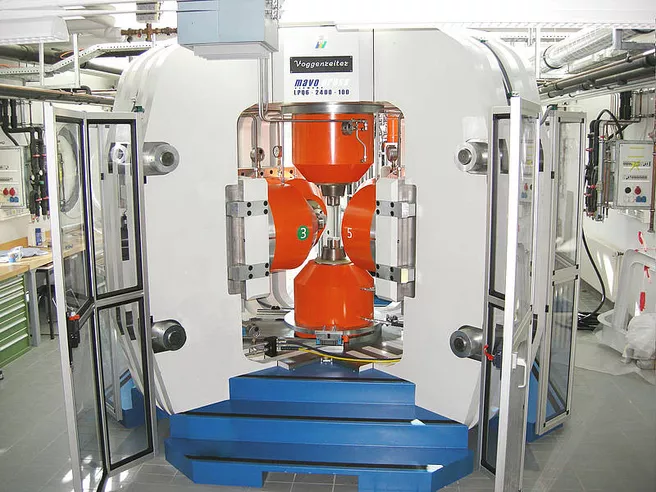Verbundforschung describes the financing mode of basic science endeavours by the German federal ministry for education and reserach (BMBF) where the topics
are specific to large-scale research, of supraregional, international or fundamental significance and where large-scale equipment for research are required. The section dealing with condensed matter research is subdivided in the types of radiation used, namely synchrotron and free electron lasers, neutrons and charged particle beams.
In the next three year period, starting from July 1st, 2010, several projects will be funded to build new instruments and equipment at the FRM II. The total sum
of the funding is about 10 Million Euro. The projects to build new instruments
are a follow-up project for the cold three-axis instrument (fig. 1) KOMPASS (Markus Braden, Universität zu Köln and Peter Böni, Technische Universität München) and the time-of-flight powder diffractometer PowTex (Richard Dronskowski, RWTH Aachen and Bent Hansen, Universität Göttingen). The
very successful setup to use polarized neutrons on the single crystal diffractometer POLI-HEIDI will become an independent instrument using the beam port SR9a on the hot source (Georg Roth, RWTH Aachen).
A complete new instrument will use the transmitted beam of the PowTex instrument to investigate samples at extreme conditions, i.e. high pressure and high temperatures. This instrument will be built by the Geozentrum Bayreuth in the institute of Hans Keppler. Using time-of-flight neutrons, a complete diffraction pattern even under the restricted space condition will be possible. In addition the transmitted beam through the sample will be used for in-situ radiography which is suited to investigate for example, viscosities at these extreme conditions.
The three-axis instrument PUMA will be equipped with a sophisticated polarization analysis. Funding for this project was attracted by the Universität Göttingen in the institute of Götz Eckold. Instrumental development on the time-of-flight reflectometer REFSANS will introduce complementary methods using a dual polarisation interferometer (Joachim Rädler, LMU München). Last but not least the development of new high power magnets will be initiated by a project of the Technische Universität München, led by Christian Pfleiderer.
In the subdivision of particle beams the consortium POSIMETHOD has been successful to acquire funds to further develop the use of positrons at the high intensity source NEPOMUC at the FRM II. The collaboration consists of institutes from the Universität der Bundeswehr (Günther Dollinger, Walter Hansch), Technische Universität München (Peter Böni), Universität Halle (Reinhard Krause-Rehberg) and Universität Kiel (Klaus Rätzke).
